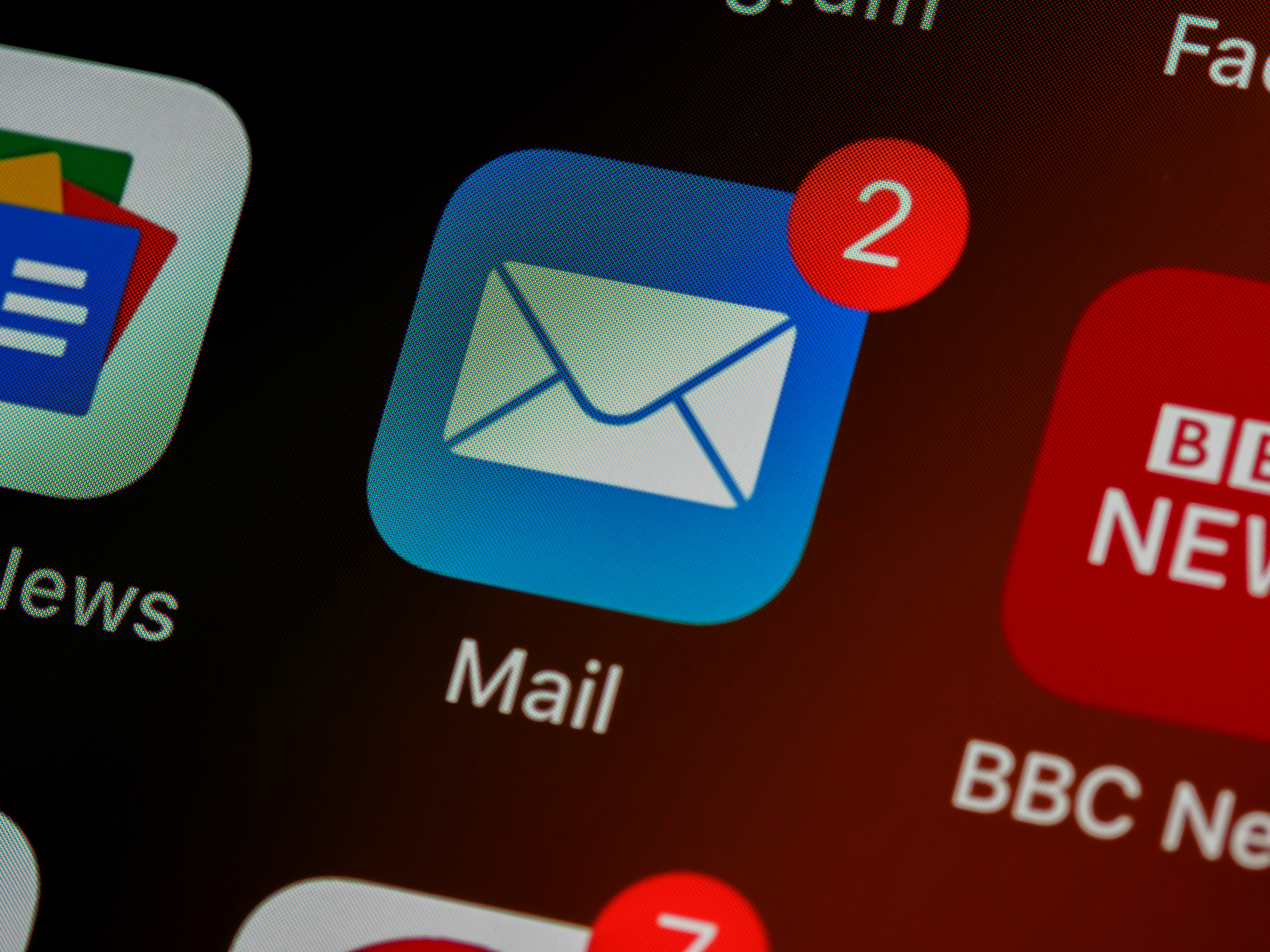In the ever-evolving digital landscape, the significance of email marketing remains undimmed, forming a cornerstone of any successful digital marketing associate’s strategy.
It’s more than just sending out newsletters; it’s about building relationships, driving sales, and enhancing brand loyalty through tailored meaningful communication.
Armed with the right tools, knowledge, and creativity, a digital marketing associate can transform email marketing into a powerful channel for engaging with global audiences.
This method fuels conversions and plays a pivotal role in customer retention.
In this article, we will unpack how email marketing can be a game-changer in your digital marketing toolkit.
Key Takeaways
- Email Marketing Remains a Vital Tool for Digital Marketing Associates, Integrating With Other Strategies to Enhance Brand Visibility and Customer Relationships
- Personalization and Targeted Communication Through Email Marketing Foster Deeper Customer Connections and Higher Engagement Rates
- Analyzing Email Marketing Data Using Tools Like Google Analytics and HubSpot Is Crucial for Understanding Campaign Performance and Refining Future Strategies
- Automation and the Use of Advanced Email Marketing Platforms Can Save Time While Ensuring Consistent and Timely Customer Engagement
- Complying With Email Marketing Laws and Regulations Protects the Brand’s Integrity and Fosters Trust With Customers
Understanding the Power of Email Marketing for Digital Success

Email marketing, despite the rapid evolution in digital strategies, remains an indispensable tool in the arsenal of a digital marketing associate.
It lays the foundation for a multidimensional approach that boosts brand visibility and strengthens customer relationships.
This segment of digital strategy neatly interlocks with other facets, such as content marketing, social media, and search engine optimization, creating a cohesive and comprehensive plan.
The effectiveness of email marketing in cultivating customer loyalty cannot be overstated, for it directly influences repeat business and customer referrals.
Furthermore, by systematically analyzing email campaign data, marketing professionals can derive insights about the return on investment (ROI), which in turn aids in fine-tuning future strategies for better alignment with consumer expectations and market trends.
Through this analytical approach, email marketing serves as a powerful engagement tool and a critical component in evaluating the financial success of digital marketing endeavors.
The Fundamentals of Email Marketing in Digital Strategies
Email marketing is a cornerstone within a digital marketing associate’s strategy, blending seamlessly with other digital tools to drive engagement and conversions. At its core, it involves sending targeted and personalized messages to a carefully curated email list, aiming to foster relationships and encourage action. This tactic leverages technology to reach individuals directly in their inboxes, presenting personalized communication opportunities.
| Strategy Component | Description | Goal |
|---|---|---|
| Email List Building | Gathering email addresses through subscriptions or other means. | To create a database of interested customers. |
| Content Creation | Designing emails that provide value and engage the reader. | To maintain interest and drive customer engagement. |
| Analytics & Reporting | Tools like Google Analytics are used to review campaign performance. | To refine future email campaigns for better ROI. |
How Email Integrates Into a Broader Digital Marketing Plan
Email marketing does not stand alone; it threads through the entire fabric of a digital marketing associate’s plan, linking arms with content marketing, social media, and search engine optimization. This integration ensures a coherent message reaches customers across all digital channels, enhancing the overall customer experience and driving meaningful engagement. Doing so amplifies brand awareness and increases the chances of conversions from multiple points within the digital ecosystem.
The Impact of Email Marketing on Customer Retention
Email marketing keeps customers connected to the brand long after their initial purchase. Delivering personalized content and exclusive offers directly to their inboxes nurtures a sense of belonging and appreciation, encouraging them to remain loyal. This strategy boosts repeat business and transforms satisfied customers into brand advocates.
Analyzing the ROI of Email Campaigns in Digital Strategies
Analyzing the ROI of email campaigns within digital strategies allows digital marketing associates to pinpoint precisely which initiatives drive the most value. Tools such as HubSpot and Google Analytics enable these professionals to track how email marketing contributes to sales and customer retention. This analysis sheds light on the effectiveness of their content, helping to refine strategies and ensure a better match with consumer interests and behaviors.
Crafting Engaging Emails for Diverse Audiences

In digital marketing, crafting emails that resonate with diverse audiences is an art form that requires a mix of creativity, precision, and strategy.
It’s not simply about blasting out messages to every email address in your database.
Instead, a digital marketing associate must first segment their email list, ensuring that messages are finely tuned to the interests and needs of different customer groups.
From there, the focus shifts to designing emails that capture attention and drive readers toward clear calls to action.
Personalization is crucial in elevating engagement rates, making each recipient feel understood and valued.
Yet, the work doesn’t stop once the send button is hit.
Continuous testing and optimization of email components are vital for refining messaging and achieving peak performance.
This meticulous process transforms emails from communication tools into powerful conduits for building lasting customer relationships and driving business success.
Segmenting Your Email List for Targeted Communication
Segmenting your email list for targeted communication is like unlocking a treasure chest of customer engagement. It allows a digital marketing associate to tailor messages so they speak directly to the needs, interests, and behaviors of different segments within their audience. By doing so, each email becomes a targeted arrow aimed at fostering deeper connections and driving specific actions:
- Identify customer personas to understand diverse audience needs.
- Create segments based on demographics, past purchases, or engagement levels.
- Customize email content to resonate with each unique segment.
Designing Emails With Compelling Content and Calls to Action
At the heart of crafting emails that captivate and convert lies the dual pillars of compelling content and clear calls to action. The digital marketing associate uses extensive content creation and design knowledge to ensure every email pulls readers in with relevant, valuable information that speaks directly to their needs and interests. Then, with precision, they insert strategic calls to action that guide recipients on the next steps, be it making a purchase, learning more about a product, or subscribing to a blog: a critical move that turns reader engagement into tangible outcomes.
| Component | Role in Email | Impact |
|---|---|---|
| Compelling Content | Engages the reader with relevance and value. | Increases reader interest and relevance. |
| Calls to Action | Guides the reader towards the next step. | Converts engagement into actionable results. |
Personalization Techniques for Higher Engagement Rates
To elevate email marketing engagement rates, digital marketing associates employ personalization techniques, making every recipient feel like the message is uniquely tailored for them, by leveraging data such as past interactions, purchase history, and even the recipient’s name, emails transition from generic blasts to personal conversations. This approach doesn’t just catch the reader’s eye; it fosters a more profound connection by showing that the brand pays attention to individual customer preferences and needs.
| Personalization Technique | Description | Impact on Engagement |
|---|---|---|
| Using Recipient’s Name | Incorporating the recipient’s name into the email’s opening. | Creates an immediate sense of familiarity and attention. |
| Behavior-Based Customization | Personalizing content based on the recipient’s past behavior and interactions with the brand. | Enhances relevance, leading to increased open and click-through rates. |
| Dynamic Content | Changing email content based on real-time data like location or weather conditions relevant to the recipient. | Boosts engagement by aligning the message’s context with the recipient’s current environment or state. |
Testing and Optimizing Email for Better Performance
Testing and optimizing emails is a continuous cycle for a digital marketing associate to enhance email performance: They refine subject lines, tweak email designs, and adjust the timing of their sends to see what resonates best with their audience. By employing A/B testing and analyzing the results, these professionals can significantly boost open rates and engagement, ensuring their email marketing efforts yield the highest possible return on investment. This method makes it possible to fine-tune campaigns, creating emails that reach and truly speak to the audience.
| Optimization Technique | Application | Expected Outcome |
|---|---|---|
| A/B Testing | Comparing two versions of an email to see which performs better. | Identify the more effective email elements. |
| Design Adjustments | Modifying layouts and visual elements based on feedback and data. | Enhance user engagement and readability. |
| Timing Optimization | Changing the send time of emails to increase open rates. | Better alignment with audience habits for improved results. |
Leveraging Email Marketing Tools and Software

Picking the right platform caters to the unique needs of each business, offering customizable solutions that enhance engagement and simplify communication.
By automating email campaigns, marketing professionals save time and increase productivity, ensuring no opportunity to engage the customer is missed.
Tracking and interpreting analytics becomes a game-changer, providing clear insights into campaign performance and guiding future strategies.
Moreover, seamless integration with customer relationship management (CRM) systems and other tools streamlines processes and creates a unified approach to managing customer interactions.
This section explores how leveraging these technologies tightens the bond between a brand and its community, making email marketing an indispensable tool in a digital marketer’s toolkit.
Selecting the Right Email Marketing Platform for Your Needs
Choosing the right email marketing platform is crucial for a digital marketing associate aiming to maximize the impact of their campaigns. It evaluates platforms offering scalability, user-friendly design interfaces, and advanced segmentation features to tailor messages for diverse audiences. The choice should also factor in integration capabilities with other marketing tools and analytics services, streamlining the process of tracking and refining campaigns for better engagement and conversion rates.
Automating Email Campaigns for Efficiency
For a digital marketing associate, automating email campaigns is akin to setting an intelligent, autonomous engine in motion: It cuts down on the manual workload and ensures timely and consistent interaction with the audience. This elevated efficiency allows marketing professionals to focus on crafting more strategic and personalized content while the automation software handles the intricate details of scheduling and dispatching emails to the right segments at the optimal times.
- Automation tools streamline the process of sending out emails, making it possible to reach audiences without constant manual oversight.
- These tools allow for precise timing in email delivery, ensuring messages hit inboxes when recipients are most likely to engage.
- By freeing up valuable time, marketers can invest more effort into creative strategy and content refinement, enhancing the overall impact of their email marketing efforts.
Tracking and Interpreting Email Marketing Analytics
For a digital marketing associate, digging into email marketing analytics is akin to unlocking a treasure trove of insights. By scrutinizing open rates, click-through rates, and conversion data, they can glean how well their campaigns resonate with their audience. This critical evaluation allows them to tweak and perfect future emails, ensuring they hit the mark more accurately each time.
Integrating Email Marketing With CRM and Other Tools
Integrating email marketing with Customer Relationship Management (CRM) systems and other digital tools equips digital marketing associates with a seamless approach to managing and analyzing customer interactions. This synergy allows them to synchronize email campaigns with customer data, delivering more targeted and relevant messages. Such integration enhances the personalization of emails, contributing significantly to higher engagement levels and nurturing stronger customer relationships.
Staying Compliant With Email Marketing Laws and Regulations

Staying informed about the General Data Protection Regulation (GDPR), CAN-SPAM Act, and other pertinent email regulations is not just about legal compliance; it’s about protecting the brand’s integrity and fostering trust with customers.
To accomplish this, adopting best practices for obtaining and managing email consent helps ensure that every communication sent respects the recipient’s preferences and privacy.
Additionally, developing strategies to maintain a compliant email marketing list safeguards against potential penalties and enhances email campaigns’ overall quality and effectiveness.
In essence, understanding and applying these regulatory frameworks and consent management techniques underpin the sustainability and success of email marketing efforts.
Understanding GDPR, CAN-SPAM, and Other Email Regulations
Understanding the complex terrain of email marketing regulations, including GDPR and CAN-SPAM, is crucial for digital marketing associates. These rules govern how email marketers collect, use, and store email addresses, ensuring that communications respect user privacy and consent. By familiarizing themselves with these frameworks, marketers protect the brand while building trust with their audience.
- GDPR sets strict guidelines for handling EU citizens’ data, demanding explicit consent for email subscriptions.
- The CAN-SPAM Act outlines requirements for commercial messages, including the need for a clear opt-out mechanism.
- Each regulation impacts how email marketing functions, making compliance a key factor in strategy development.
Best Practices for Obtaining and Managing Email Consent
Ensuring that every email respects the recipient’s autonomy starts with transparent practices for obtaining consent. A digital marketing associate should ensure individuals opt-in to receive communications and understand what they are signing up for. Managing this consent involves giving recipients easy options to modify their preferences or opt-out entirely, further solidifying trust and transparency between the brand and its customers.
Strategies for Maintaining a Compliant Email Marketing List
A digital marketing associate ensures their email marketing list stays compliant by regularly updating it and removing those who have opted out or have inactive email addresses. This approach not only adheres to laws and regulations but also enhances the effectiveness of email campaigns by focusing efforts on engaged and interested recipients.
Email Marketing Strategies for Lead Generation

In the competitive digital marketing landscape, email marketing emerges as a pivotal strategy for nurturing leads through the sales funnel.
By effectively utilizing email marketing, digital marketing associates tap into a resourceful method to guide prospects closer to becoming loyal customers.
The journey involves crafting tailored email sequences that resonate with prospects at different funnel stages, engendering a stronger connection with the brand.
Furthermore, incorporating A/B testing into their strategy provides invaluable insights, enabling marketing professionals to refine their approach continuously.
This iterative process is crucial in optimizing lead generation efforts, ensuring that every email sent maximizes the potential for conversion.
Utilizing Email Marketing in the Sales Funnel
In the intricate journey of nurturing leads, email marketing is a pivotal strategy within the sales funnel. Digital marketing associates harness the power of targeted emails to gently nudge prospects closer to making a purchase. They effectively bridge the gap between initial interest and final conversion by delivering custom messages that resonate with each stage of the buyer’s journey.
- Identifying potential customers and segmenting them according to their interests and behaviors.
- Engaging these segments with personalized content addressing their needs and pain points.
- Guiding them towards purchasing carefully crafted calls to action and special offers.
- Maintaining post-purchase contact to ensure customer satisfaction and encourage repeat business.
Crafting Email Sequences That Convert Prospects to Customers
For a digital marketing associate, creating email sequences that effectively lead prospects through the journey from awareness to purchase is a nuanced craft. These sequences, carefully designed and personalized, act as a roadmap, guiding potential customers through thoughtfully crafted messages that address their needs, answer questions, and alleviate concerns at each stage of their decision-making process. By doing so, they move seamlessly from curiosity about a brand to trust in its solutions.:
- Introducing the brand and its core values to spark initial interest.
- Sharing informative and relevant content to build credibility and trust.
- Highlighting customer success stories and testimonials to validate the brand’s promises.
- Presenting tailored offers or incentives to encourage the first purchase.
- Continuing engagement with helpful information, updates, and offers to foster loyalty and repeat purchases.
Leveraging a/B Testing to Improve Lead Generation Efforts
Leveraging A/B testing for lead generation efforts allows a digital marketing associate to fine-tune email tactics by comparing different elements of their campaigns. This method helps identify which aspects of the email, whether the subject line, content, or call-to-action, resonate most with the target audience. As a result, they can optimize future emails for better engagement and conversion rates, making A/B testing an essential tool in a marketer’s arsenal for improving lead generation strategies.
Measuring the Success of Email Marketing Campaigns

To truly understand the impact of email marketing initiatives, a digital marketing associate must focus on measuring their success.
This task involves diving into Key Performance Indicators (KPIs) that provide clear insights into campaigns’ performance.
By analyzing this data, marketing professionals can make informed decisions that shape future strategies, ensuring each campaign is better than the last.
The process is cyclical, relying on constant feedback and iteration for continuous improvement.
Assessing campaign effectiveness isn’t just about celebrating wins; it’s crucial to refining techniques and enhancing overall marketing efficacy.
Key Performance Indicators for Email Marketing
Key Performance Indicators (KPIs) are the compass for pinpointing the effectiveness of email marketing campaigns. Through metrics like open rates, click-through rates, and conversion rates, digital marketing associates can gauge the resonance of their communications with the intended audience. These indicators not only illuminate the strengths and weaknesses of current campaigns but also guide future improvements and strategies:
- Open rates reveal the percentage of recipients who opened an email, indicating the initial appeal of the subject line.
- Click-through rates (CTR) measure the portion of readers who clicked on one or more links within the email, reflecting content relevance and interest.
- Conversion rates assess the effectiveness of email content in prompting the desired action, whether making a purchase, signing up for a webinar, or another specific goal.
Analyzing Email Campaign Data to Inform Future Strategies
Analyzing email campaign data empowers digital marketing associates to evolve their strategies based on solid insights. By examining metrics like engagement rates and the behavior of recipients post-click, they can unearth patterns that highlight what resonates most with their audience. This iterative process allows them to craft more impactful emails, enhancing both engagement and conversion rates over time.
Continuous Improvement Through Feedback and Iteration
Continuous improvement in email marketing stems from embracing feedback and iterating based on that input. Digital marketing associates actively seek out responses from their audience, using these insights to refine and adjust their email strategies. This cycle of feedback and improvement ensures that every email campaign is more aligned with customer expectations and moves closer to achieving the brand’s marketing goals.
Conclusion
Email marketing is pivotal in a digital marketing associate’s toolkit, essential for driving brand visibility, fostering customer relationships, and ensuring digital success.
By seamlessly integrating with other digital strategies, such as content marketing and SEO, it promotes a cohesive approach that enhances customer experience across all digital channels.
The strategic analysis of campaign data allows marketers to understand email marketing’s ROI, guiding future strategies for better consumer alignment and financial outcomes.
From segmenting email lists for targeted communication to leveraging advanced personalization techniques, email marketing is a dynamic conduit for engaging diverse audiences and cultivating lasting relationships.
Moreover, the continuous optimization of emails, based on A/B testing and analytics, ensures campaigns resonate deeply with the target audience, optimizing lead generation and conversion rates.
Ultimately, through careful selection of email marketing tools, compliance with regulations, and a focus on measurable outcomes, a digital marketing associate can harness the full potential of email marketing to achieve remarkable digital marketing success.




